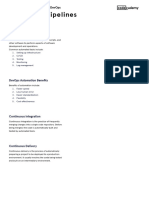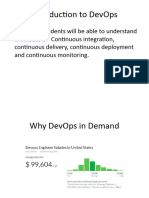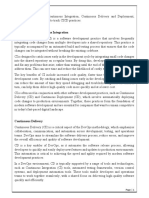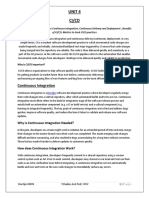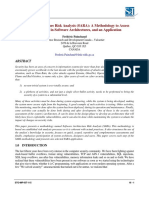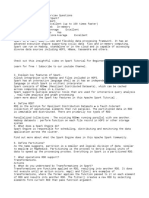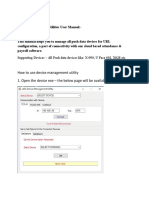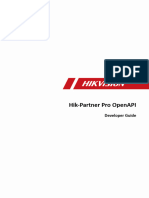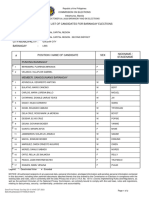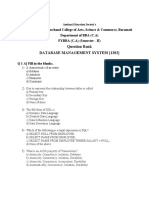0% found this document useful (0 votes)
9 views47 pagesUnit I Devops
DevOps is a collaborative approach that integrates development and operations teams throughout the software lifecycle to enhance delivery speed and reduce errors through automation. Key components include continuous integration, continuous delivery, and continuous deployment, which automate testing and deployment processes. A DevOps engineer plays a crucial role, requiring a mix of technical skills, effective communication, and collaboration to ensure smooth operations and efficient software releases.
Uploaded by
pawarneha926Copyright
© © All Rights Reserved
We take content rights seriously. If you suspect this is your content, claim it here.
Available Formats
Download as PDF, TXT or read online on Scribd
0% found this document useful (0 votes)
9 views47 pagesUnit I Devops
DevOps is a collaborative approach that integrates development and operations teams throughout the software lifecycle to enhance delivery speed and reduce errors through automation. Key components include continuous integration, continuous delivery, and continuous deployment, which automate testing and deployment processes. A DevOps engineer plays a crucial role, requiring a mix of technical skills, effective communication, and collaboration to ensure smooth operations and efficient software releases.
Uploaded by
pawarneha926Copyright
© © All Rights Reserved
We take content rights seriously. If you suspect this is your content, claim it here.
Available Formats
Download as PDF, TXT or read online on Scribd
/ 47










































